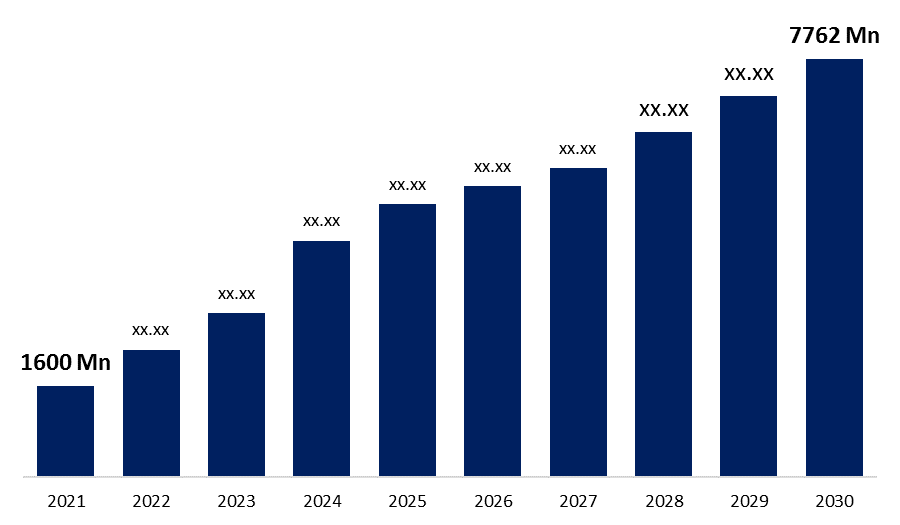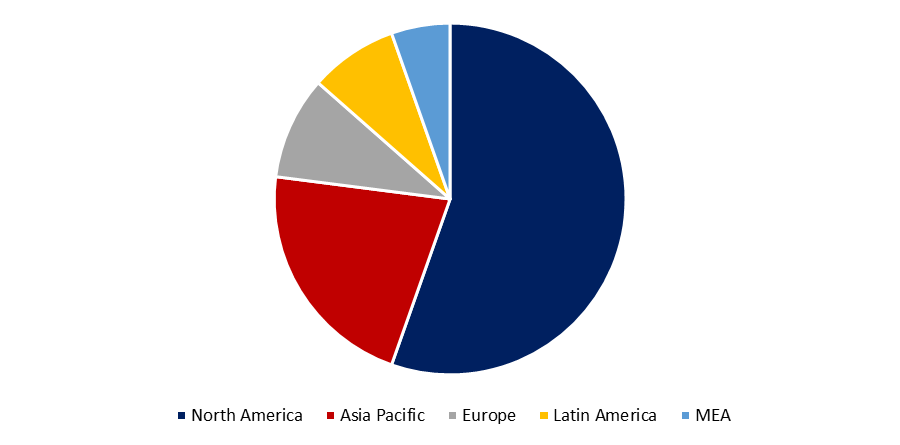Global Atmospheric Water Generator Market Size, Share & Trends, COVID-19 Impact Analysis Report By Product (Cooling Condensation, Wet Desiccation), By Application (Industrial, Commercial), By Region (North America, Europe, Asia-Pacific, Latin America, Middle East, and Africa), Global Industry Insights, Trends, Outlook, and Opportunity Analysis, 2021-2030
Industry: Advanced MaterialsGlobal Atmospheric Water Generator Market Size Synopsis: Information, By Product, Application And, Region With a Forecast Till 2030. The market for Atmospheric Water Generators is said to grow from its initial forecast of USD 1600 million in 2021 to USD 7762 million by 2030, with a CAGR of 18.35%.

Get more details on this report -
MARKET OVERVIEW
Most businesses and commercial buildings with expensive installation expenses employ atmospheric water generators. The growing demand for atmospheric water generators in industrial and commercial buildings is due to increased environmental awareness for environmentally friendly methods in the business. There are not many competitors in the market mentioned above, which is still in its early stages of development. Over the anticipated period, the market is predicted to rise as people become more aware of the need to drink healthy water.
MARKET DRIVERS FOR THE GLOBAL ATMOSPHERIC WATER GENERATORS MARKET -
Reduced Freshwater Resources, Rising Water Levels and Favourable Governmental Restrictions Are All Proven To Be The Driving Forces.
Besides drinking, fresh water is a resource vital to human survival and is used in industry, agriculture, and other household functions. Life on earth, for both humans and animals, may be seriously threatened by the depletion of water supplies and the growing human population. Since the last ten years have seen a dramatic decline in the amount of water available per person, now is the ideal moment to practice water conservation.
Atmospheric water generators are proving to be a blessing for the people who are living in regions that have major water scarcity and proving to be one of the key drivers for the said market due to the increased awareness about water conservation and the desire to get fresh water for daily needs and for drinking. As AWG technology continues to evolve, producers will be able to create atmospheric water generators with high efficiency and minimal environmental impact. The massive carbon footprint and the demand for a high power input are the only issues that the manufacturers are worried about.
Since new technologies are constantly being developed across all industries, the AWG industry is not far behind. The atmospheric water generators, which produce freshwater using a variety of novel approaches, are constantly improving.
MARKET RESTRAINTS FOR THE GLOBAL ATMOSPHERIC WATER GENERATORS -
The Market For Atmospheric Water Generators May Face Challenges Due To Its High Carbon Footprint and Demand For Increased Power.
Due to the high power requirement for the atmospheric water generator's operation, there is a significant risk of greenhouse gas emissions. Additionally, these generators may have higher carbon footprints than other clean water-producing units like reverse osmosis and desalination plants if they are powered by coal or any other non-renewable source of energy. With manufacturers attaching onboard power generation equipment employing solar or wind turbines, these problems should soon be rectified. The second main constraint is the high power need, as the atmospheric water generator continually requires a large electricity input to operate and produce freshwater through the equipment. In addition, a separate power source is required to run the condenser and evaporator, where the air is cooled and converted to water. The market expansion for atmospheric water generators may be significantly hampered by such high electricity consumption and inefficient design technologies.
Global Atmospheric Water Generator Market Report Coverage
| Report Coverage | Details |
|---|---|
| Base Year: | 2021 |
| Market Size in 2021: | USD 1600 Million |
| Forecast Period: | 2021-2030 |
| Forecast Period CAGR 2021-2030 : | 18.35%. |
| 2030 Value Projection: | USD 7762 Million |
| Historical Data for: | 2017-2020 |
| No. of Pages: | 170 |
| Tables, Charts & Figures: | 106 |
| Segments covered: | COVID-19 Impact Analysis Report By Product, By Application, By Region |
| Companies covered:: | Akvo Atmospheric Water Systems, Dew Point Manufacturing, Ray Agua, Watermaker India Pvt Ltd., Planets Water, Water Technologies International Inc., and others |
| Growth Drivers: | Reduced Freshwater Resources, Rising Water Levels and Favourable Governmental Restrictions Are All Proven To Be The Driving Forces. |
| Pitfalls & Challenges: | The Market For Atmospheric Water Generators May Face Challenges Due To Its High Carbon Footprint and Demand For Increased Power. |
Get more details on this report -
MARKET SEGMENTATION FOR ATMOSPHERIC WATER GENERATORS WORLDWIDE -
The Market For Atmospheric Water Generators is divided into product and application segments. Wet desiccation and cooling condensation are two types of product segmentation.
Out of these, the cooling condensation category dominates the market, with a market value of USD 3165 million in 2021 and an anticipated CAGR of 19.2% to reach USD 15336 million by 2030.
The term "cooling condensation technique" describes the process of removing air from the atmosphere, chilling it, and then condensing it to produce water droplets. A condensor in the atmospheric water generator performs the aforementioned function and produces freshwater from the atmosphere.
As one of the most popular AWG techniques readily available and can be erected at any site regardless of the weather, the cooling condensation approach is extensively used in such atmospheric water generators. Wet desiccation, the second segment, currently accounts for a sizeable market share with a market value of USD 35 million in 2021 and a projected CAGR of 17.5% to reach USD 149 million in 2030.
The AWG system uses a method called wet desiccation that produces water droplets out of the drawn-in air without using a dehumidifier. Eliminating the dehumidifier results in a significant reduction in power usage, which makes it slightly more cost-effective to use. The dehumidifier requires a power source to operate, which consumes enormous electricity. The wet desiccation system utilises a brine solution comprising various salts that absorb moisture from the air and take care of the remainder in place of a dehumidifier.
MARKET SEGMENTATION
The industrial, commercial and residential sectors make up the global atmospheric water generator market when it is split by application. Industrial segmentation accounts for the largest portion of the global market, with early estimates indicating that it will reach USD 2450 million in 2021 and USD 12175 million in 2030, respectively, with a CAGR of 19.5%. Industrial water generators are typically employed in establishments that need to produce more than 5000 gallons of water per day. As it turns out to be the most economical choice when compared to other options, the oil and gas industry, notably in the Middle East, uses desalinated water from the oceans to generate freshwater. With a CAGR of 18.4%, the commercial category is projected to grow from a market worth of USD 724 million in 2021 to USD 3310 million in 2030. These devices are used in commercial buildings, such as restaurants and theatres, to solve the problem of water scarcity.
Additionally, these machines come with a built-in power source that may produce all the power needed right away at a lower energy cost. In addition, many initiatives related to metropolitan areas with sophisticated residents, particularly in large economies, are predicted to flood the market development over the anticipated time frame.
With growing commercial and military interest, the atmospheric water generator (AWG) industry is anticipated to experience significant growth. In military headquarters, business AWGs that can produce up to 5,000 gallons of water are used. Therefore, military educators have access to clean, safe drinking water wherever they are stationed.
With a market value of USD 27 million in 2021 and growing at a CAGR of 16.5% to reach USD 107 million by 2030, the Residential segment of the market also makes a good contribution. There is a possibility of severe water scarcity in some parts of the world due to the growing population and growing need for water. A rising concern is how to manage the water crisis, particularly in regions with a water shortage like the Middle East, Southern Spain, Central Asia, Northern China, and some of India. Depending on the technology utilised, the humidity levels, and other factors, a household atmospheric water generator can create more than 7 to 100 gallons of water daily. Additionally, the amount of energy used for residential purposes is not as large as that used for industrial or commercial purposes; it only takes 3.2 kWh of energy to create one gallon of water, which, depending on current electricity prices, barely costs the consumers a dollar.
GLOBAL ATMOSPHERIC WATER GENERATOR MARKET: REGIONAL ANALYSIS
North America, Europe, Asia-Pacific, Middle East & Africa make up most of the divisions within the worldwide atmospheric water generator industry. With a market share of USD 1132 million in 2021 and a projected increase to USD 6532 million by 2030 with a CAGR of 21.5%, the Asia Pacific area is the most dominating of these. Water shortage and the diminishing supply of freshwater resources in the area can be linked to the rise in the number of AWG installations there. The expansion of infrastructure projects and industrialisation both significantly contribute to the increase in demand for such atmospheric water generators.

Get more details on this report -
The Asia Pacific market will undoubtedly be the most lucrative for atmospheric water generators due to the growth in population in the region above. The Middle-East & Africa area, which accounted for a market value of USD 665 million in 2021 and is anticipated to reach USD 3509 million by 2030 with a CAGR of 20.3%, is the second most important region in the world market for atmospheric water generators.
Since water generation depends on the temperature and humidity of the surrounding atmosphere, the atmosphere must be suitable for producing a sufficient amount of water from the atmospheric water generator.
The next region is Europe, with market size of USD 359.5 million in 2021 and a projected CAGR of 15% to reach USD 1264 million by 2030. One of the reasons for the rise of this water generator category, though in smaller numbers but still running, is that Europe has the most industries operating in the region. Significant industrialised nations like the U.S. and Canada, which hold a sizable market share for atmospheric water generators, make North America the most developed region in the world. With a CAGR of 16.20%, the North American area is projected to grow from USD 450.6 million in 2021 to USD 1740 million in 2030.
COMPETITORS IN THE GLOBAL MARKET FOR ATMOSPHERIC WATER GENERATORS INCLUDE:
Akvo Atmospheric Water Systems, Dew Point Manufacturing, Ray Agua, Watermaker India Pvt Ltd., Planets Water, Water Technologies International Inc., and others are the leading companies in the global atmospheric water generator industry.
RECENT DEVELOPMENTS BY KEY PLAYERS -
- The Akvo Atmospheric Water Systems, which produce drinking water from the air, were recognised as the most cost-effective atmospheric water generator in February 2019.
- Water Technologies International Inc. announced in April 2021 that its residential division would be expanded into a subsidiary company called water zone Inc.
- Planets Water introduced its newest product in the line of atmospheric water generators in February 2020.
MARKET SEGMENTATION FOR ATMOSPHERIC WATER GENERATORS WORLDWIDE -
- Based on products -
- Condensation During Cooling
- Moisture Desiccation
- Based on applications -
- Industrial
- Commercial
- Residential
- Regionally -
- America, North
- Europe
- Asia-Pacific
- Mideast and Africa
Need help to buy this report?